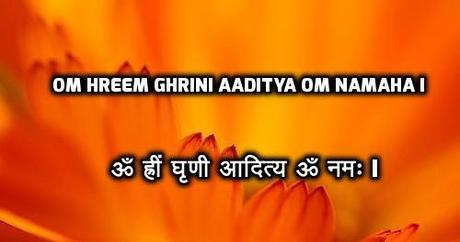
INTRODUCTION
Diabetes mellitus (madhumeh) is one of the most common non-communicable diseases (NCDs). It is a chronic metabolic disorder marked by a high level of blood glucose (hyperglycemia) which occurs due to defects in insulin production, insulin action or both.
Diabetes mellitus (madhumeh) is of two types
- Type 1 Madhumeha or insulin-dependent (IDDM) in which there is complete insulin deficiency.
- The second one is type 2 Madhumeha or Non-Insulin Dependent (NIDDM) which is characterized by impaired insulin secretion, Insulin resistance, and increased glucose production.
- Type 2 diabetes mellitus is more common and is increasing more rapidly due to sedentary life habits, faulty dietary habits, and stress.
PREVALENCE:
The prevalence of diabetes is increasing day by day globally and is considered the fourth leading cause of death in developing countries like India. Type-2 Diabetes mellitus is more common and is responsible for 90%of cases (approx.). According to WHO reports it is increasing with a rise from about 32 million cases in 1985 to 177 million cases in 20000 and by the year 2030 more than 360 million people would have diabetes worldwide. The prevalence of diabetes increases with the age in type2.
Ayurvedic Perspective of Diabetes :
According to Ayurveda, diabetes mellitus can be correlated to "Madhumeh" one of the twenty types of Prameha. Madhumeh (Madhu means sweet/honey and Meh means excessive urination) is a disorder in which a patient passes "excessive urine with sweet taste like honey," Madhumeh is also considered as dhatupak janya vikriti which means a disease caused by a defective metabolism which leads to derangement of seven dhatus( ras, rakt ,mans, med, asthi , majja, shukar ) . There are approx. 20 types of Pramehas (urinary disorders) described in Ayurvedic texts.

These are based on the predominant doshas and are categorized as:
- Kaphaja Prameha ( Further divided into 10 types )
- Pitta Prameh (Further divided into 6 types )
- Vataj Prameh ( Further divided into 4 types)
- Sahaj Prameh ( Juvenile onset diabetes)
According to Acharya Sushruta Madhumeh is narrated as Kshaudrameh. In Madhumeh patient passes an excessive quantity of urine having Madhur (sweet taste) and Kashaya (astringent taste). The texture is dry (Ruksha), and the body attains sweetness.
The etiology of Madhumeh (DM) depends upon many factors like genetics ( family trait), overweight (fat- meda) patients, but the main causes of madhumeha are lethargic lifestyle ( e.g. idle sitting, excessive sleep, ) and, unhealthy food habits ( excessive intake of food having sweet, and fatty food items), causing vitiation of Kapha dosha .
Ayurveda divides Madhumeh (DM) into two categories:
- Genetic (Sahaja) DM that resembles with juvenile diabetes or insulin-dependent diabetes that occurs in a young age.
- Acquired (apathaja) DM that occurs due to an unhealthy lifestyle in old age and obese people and resembles with type 2 DM
Pathogenesis (Samprapti) of Madhumeh:
According to Ayurvedic texts, all types of Prameha (urinary disorders) occur due to the derangement of Kapha that spreads and mixes with fat (meda) throughout the body. Kapha mixes with fat which passes into the urinary system hence interfering with normal urine excretion. Vitiation of three doshas like pitta, Vata and other body fluids (Malas) are also involved in this blockade. In Diabetes this blockade is the main cause of frequent urination. If these Prameha are not cured properly then they might convert into Madhumeh. This again leads to the deranged development of body tissues and impaired carbohydrate, protein and fat metabolism.
The involvement of tissues and all dhatus except Asthi leads to damage of blood vessels, kidneys, eyes, and nerves.
PROGNOSIS OF MADHUMEH (DM)
According to classical Ayurveda, the prognosis can be divided into three categories.
- Curable (Sadhya) - This includes patients who are diagnosed early in the onset, obese (sthool) patients and the origin of their disease in Apathayja.
- Yapya ( Palliabe)-This type includes Pittaja prameha and certain types of kaphaja prameh can be controlled with treatment (palliative management)
- Asadhya (Incurable) - Vataja Prameha comes under this category of Prameha and inherited diabetes.
According to Ayurved a, the Kaphaja Pramehas are curable because the causative dosha and the affected tissues share the same properties, thus requiring the same type of treatment.
In the case of Pittaja urinary disorders, these are found to be controllable (palliative) and the causative dosha is pitta but the waste products (dushya) and tissues are different, requiring a different type of therapy.
Vataja Prameha (urinary disorders) are considered to be incurable because of the deterioration of tissues (dhatus) and hormones (Ojas).
So we can now divide the patients of Diabetes (Madhumeh) into two groups. The first group includes patients who are obese, having acquired diabetes, caused due to a sedentary lifestyle with the involvement of Kapha and Pitta dosha. Prognosis is better in this type as the measures of the treatment are better. The second Group includes patients of hereditary diabetes who are asthenic with the involvement of Vata dosha. The available treatment is less and there are more chances of complications for this type of Prameha.
COMPLICATIONS:
Microvascular Complications of Madhumeh (DM) like diabetic Retinopathy, Nephropathy, neuropathy etc. occurs due to the involvement of the tissues (dhatus).
In Ayurveda, DM is described not only as a condition of madhumeha (sugar loss in the urine), but also as a condition of ojomeha (immunity and hormone loss). Therefore prevention of type 2 Diabetes mellitus is a major issue these days. The three fundamental principles of Ayurveda i.e. Aahar (diet), Vihar (lifestyle), and Aushadhi (medicine or therapeutic modalities) play an important role in the prevention and control of diseases from further complications.
MANAGEMENT OF DIABETES (Nidanparivarjnam)
Prevention is better than cure ". According to the basic principle of Nidana Parivarjnam in Ayurveda, prevention is the first and foremost principle of treatment of diabetes (Madhumeh) by avoidance of causative factors. According to Acharya Charka, the Purvarupa of Prameh resembles prediabetes conditions. In the Pre-diabetic phase blood, glucose levels may be either normal or on the higher side of the normal range. This screening of diabetes should begin at 30-45 years of age and should be repeated every three years. To avoid further complications, screening of pre-diabetics is very important and changes in diet and lifestyle are made to prevent the occurrence of diabetes.
In Ayurveda, the role of Ahara (Diet) and Vihara (lifestyle) and Aushadhi (Medicine) are very important in Madhumeh (Diabetes) to control blood sugar levels as well as to prevent its complications.
Aahar (Diet)
- Restriction of heavy food items like excessive use of milk and milk products, the meat of domestic/ aquatic animals, new grains, consumption of jaggery /sugar, etc.
- Restrict fatty foods which increase body weight and cholesterol levels.
- Avoid sleep in the day times.
- A seasonal diet and lifestyle should be adopted.
- Cereals
- various preparations of rice which crops within 60 days like ( Shastic Shali), Purana shali (old rice), Barley (Yava), Wheat ( Godhuma)
- Pulses
- Red Gram (Adhaki), Horse Gram (Kulattha) and Green Gram (Mudga) etc. can be taken.
- Vegetables
All types of bitter and astringent leafy vegetables should be taken like Methika (Trigonella foenum) Karela (Momordica charantia), Patola (Vietnamese luffa), etc. should be given. , Karvellaka, Bimbi, Maricha (Piper nigrum), Saindhav lavana (rock salt) should be used.
- Regular Exercise and practice of Yoga and more calorie consuming activities like (brisk walking, cycling, swimming, etc.) should be done.
- Avoid fruits like banana, cheeku, mango and grapes with high simple sugars.
- Fruits like orange, watermelon, apple, guava, Jambun (Syzigium cumini) and Amalaki (Phyllanthus Emblica) can be used.
- The flesh of Deer (Harina mamsa), Rabbit (Shashaka mamsa), birds like Kapotha, Titira, etc. can be taken.
- Liquor: Old Sura (oldwine) can be given.
Vihar (Lifestyle Changes)
Physical exercise for at least 30-60 minutes daily is recommended in cases of type 2 diabetes mellitus (Madhumeh). It helps to maintain regular blood sugar levels. Rigorous exercises are contraindicated in weak and lean patients.
Therefore Yoga is very helpful for diabetic patients with the least physical stress. Different kinds of Yogasanas (Paschimotanasana, Halasana, Bhujangasana, Shalabhasana and dhanurasana) cause direct stimulation of the pancreas that increases the production of insulin by the pancreas. This, in turn, improves circulation and reduces the risk of cardiovascular diseases.
Pranayam:
Pranayam is recommended on a regular basis with a spiritual aspect. Breathing exercises like Anulom Vilom( alternate nostril breathing ) and Kapalbhatti ( one time inhale, exhale ) are very beneficial for the prevention and management of diabetes as it causes equilibrium in functions of all the systems, especially nervous system. Along with Yoga and exercise, meditation for stress management is very important. The regular practice of Yoga, Pranayam, and meditation in diabetic patients helps to focus the mind and create the right mental approach to prevent diabetes.
MEDICINE AND THERAPEUTIC MODALITY (Aushadhi)
1.Shodana Chikitsa ( bio-cleansing therapies)
It means internal cleansing of the body which is recommended in the case of Obese (Sthoola Diabetic) patients. This type of chikitsa (therapy) depends upon dosha predominance like (Pitta predominant patients are advised purgation, Kapha predominant patients are advised emesis). Panchkarma treatments come under this category of chikitsa.
Shaman Chikitsa
This type of treatment is done by pacifying the Doshas. Many Ayurvedic formulas have been found to be useful in the management of Diabetes (Madhumeh).
Miraculous Herbs to treat Diabetes:
Role of Mantras in Diabetes (Madhumeh)
Mantras help people to get rid of Diabetes (Madhumeh) as by chanting mantras positive energies are attracted which helps in healing. It's not that we can treat diabetes only by Mantras but this chanting of Mantras speeds up the healing time and helps you get healthier quickly. There is no doubt on the efficacy of Mantras because this is the only way to get yourself healed from inside by showing devotion. It has been recognized that Mantras have beneficial effects on human beings and even plants. Regular chanting of Mantras helps in taking you to a spiritual journey where body, mind, and soul become calm. Your body gets rejuvenated by the power of Mantras.
Here are some powerful Hindu Mantras that can help you.
1.Madhumeh Mantra
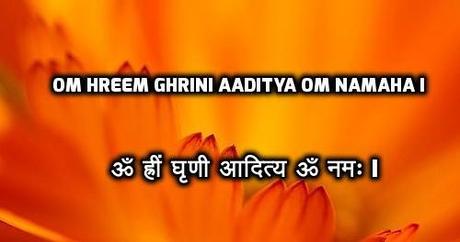
Chanting of this Mantra can be started on an auspicious day in Shukla Paksha. Chanting is done by sitting on the floor (not the bare floor) alone and facing east and recite the mantra 108 times daily with faith.
2.Dhanvantri Mantra:

First of all, get seven black peppercorns and place them on your right hand. Chant this mantra for 31 times in a row and focus should be on peppercorns. After chanting, crush these peppercorns add some mishri and consume the mixture and believe that you are being healed.
3.Beej Mantra for Diabetes:
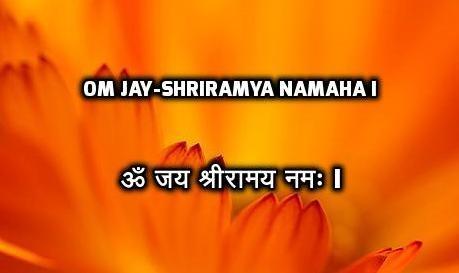
Beej Mantra is full of power. Chanting of this mantra is done with faith to overcome Diabetes (Madhumeh).
4.Mantra For Diabetes
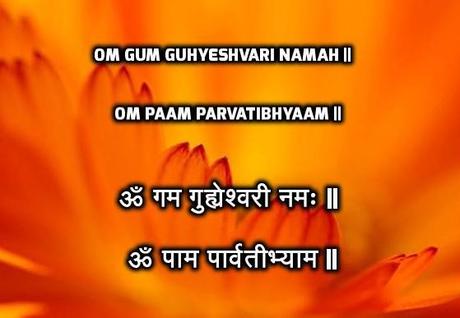
Chant this Mantra 21 times in a row. This Mantra becomes very powerful if chanted along with the Gayatri mantra.
5. Ganesh Mantra

Keep the divine spirit of Ganesha in mind and chant this mantra with the full belief to get rid of diabetes.
6.Gayatri Mantra

Gayatri Mantra is recited in every house to be protected in all ways. Chanting of the Gayatri mantra for 108 times in arrow is done to cure diabetes.
7.Diabetes Mantra
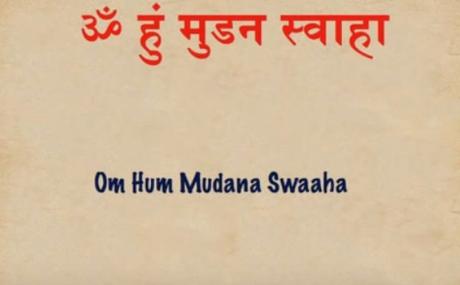
Chanting of this great Mantra at least 108 times anywhere, anytime will heal you and help you to get rid of Diabetes.
Simple Mantra to Cure Diabetes:

This is also known as Miracle mantra to treat diabetes. Chant this Mantra for 108 times every day and see the results.

